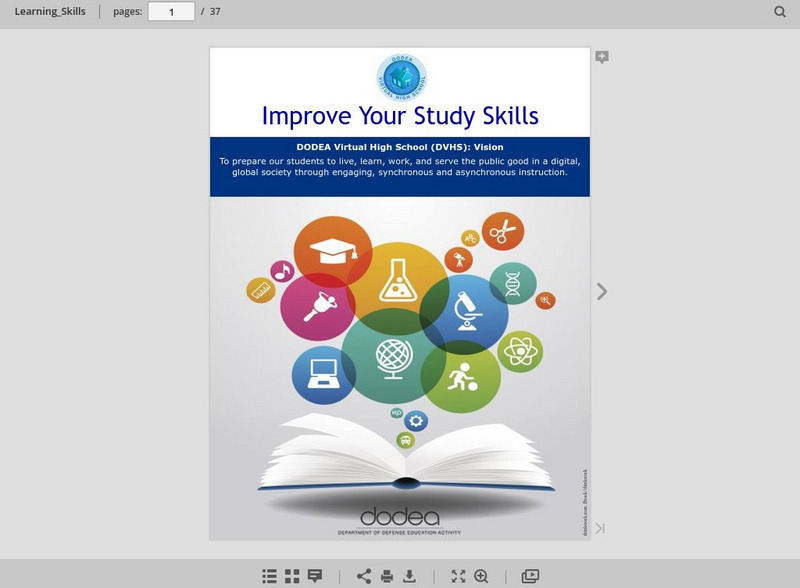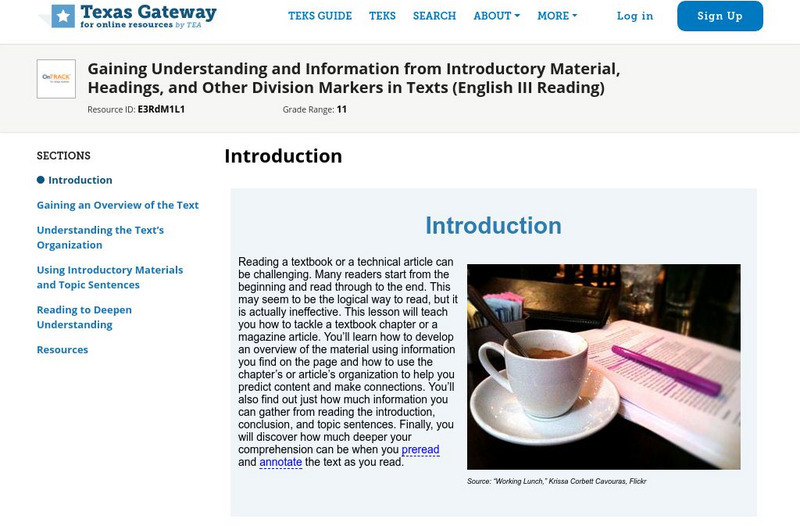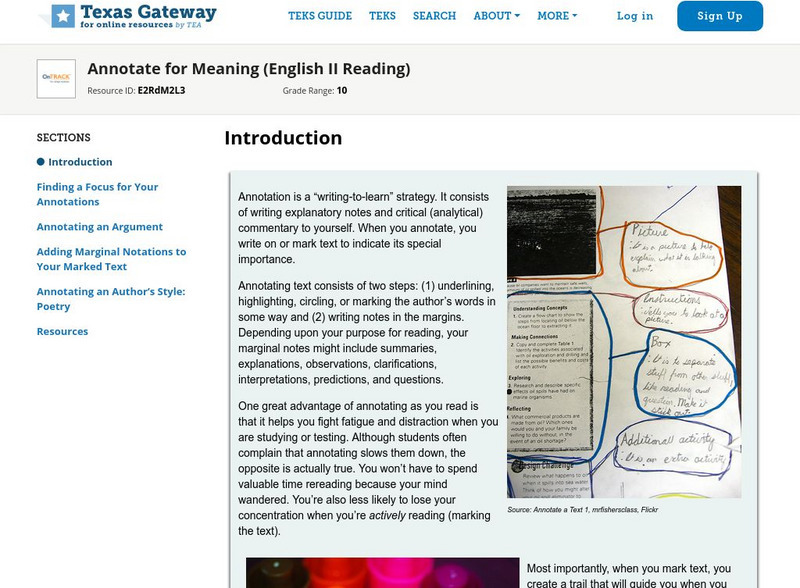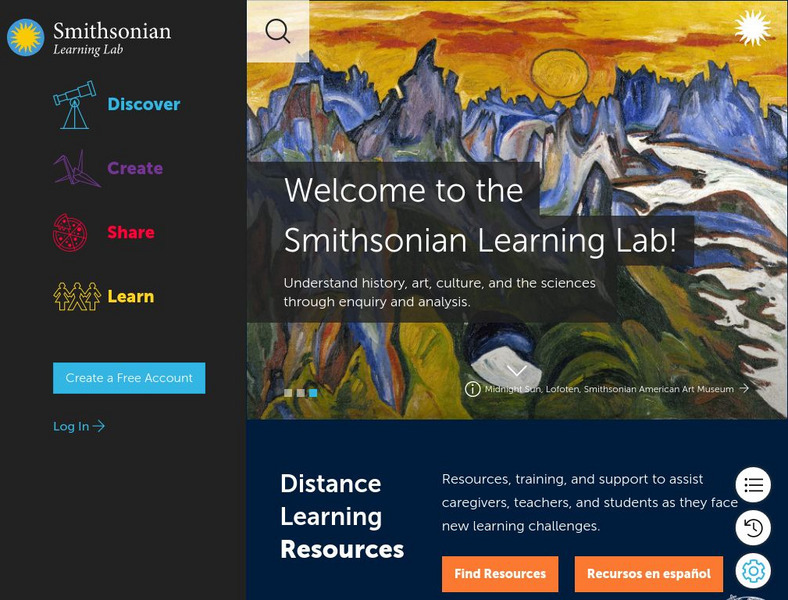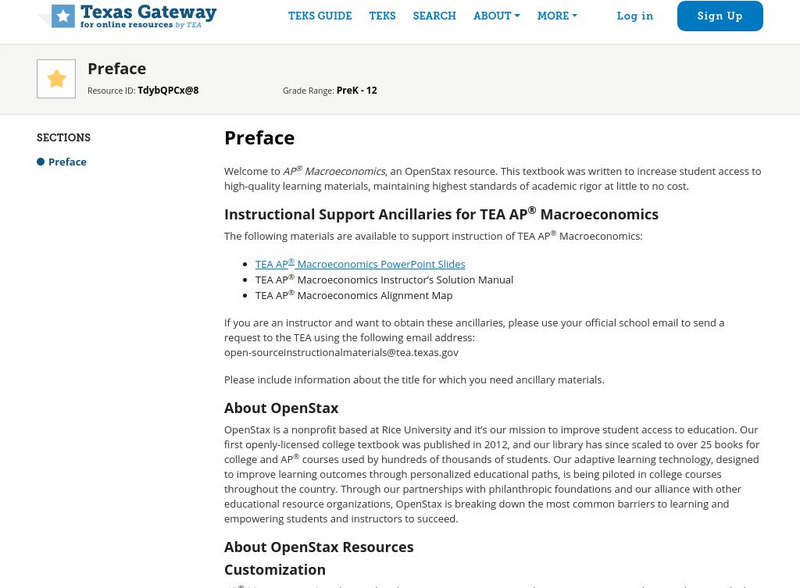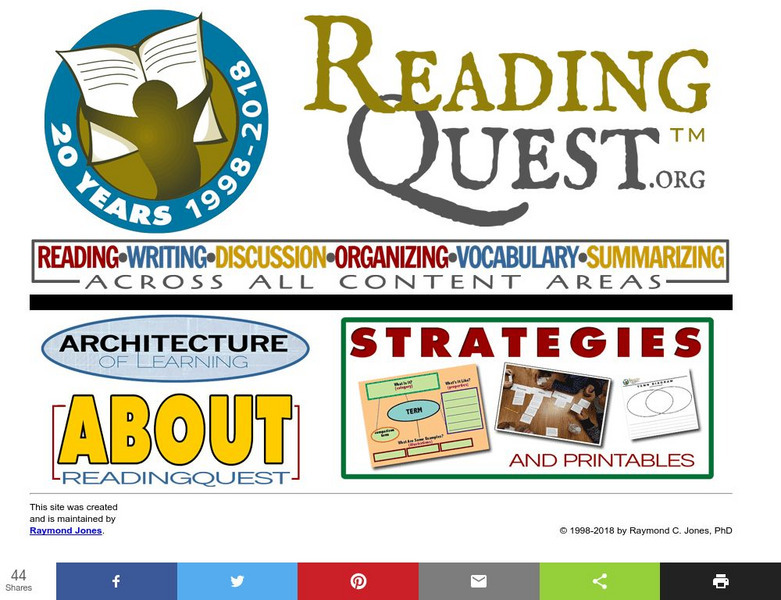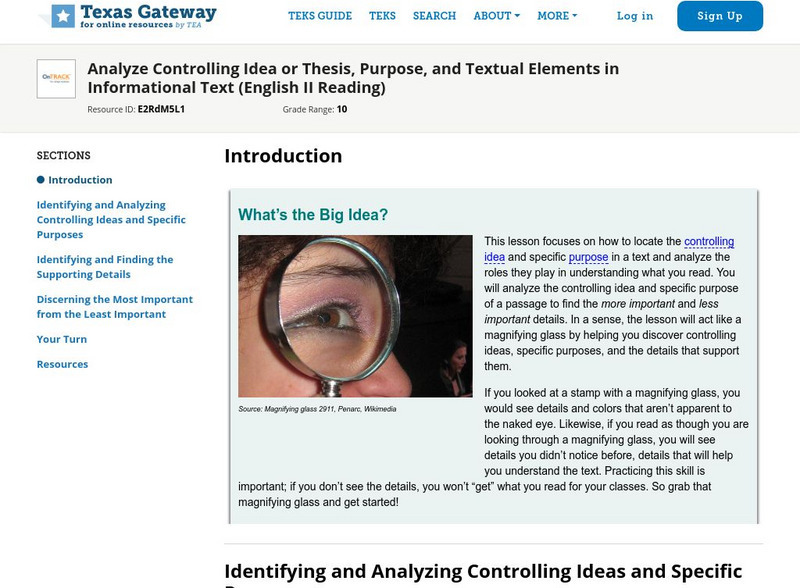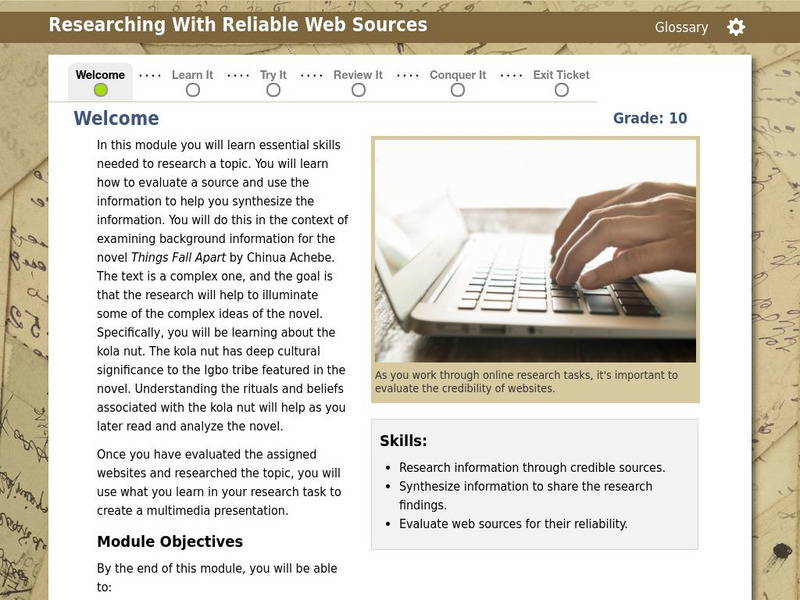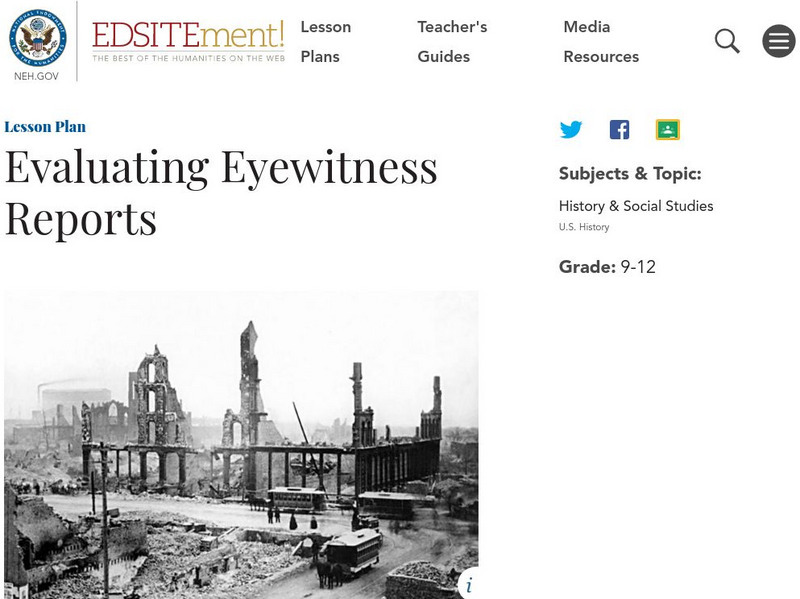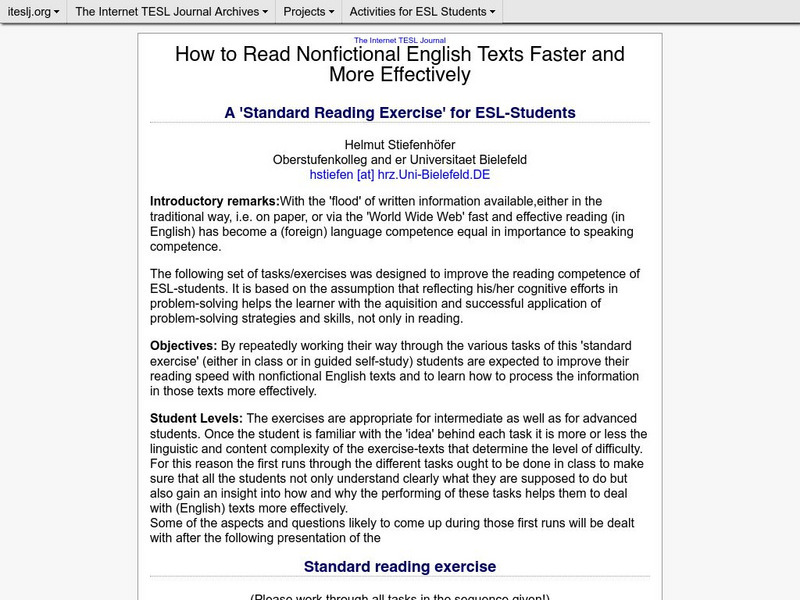Hi, what do you want to do?
Texas Education Agency
Texas Gateway: Analyze Clarity of Objectives of a Procedural Text
[Accessible by TX Educators. Free Registration/Login Required] In this lesson, students will learn how to analyze writing in software, warranty, and consumer manuals or publications.
Texas Education Agency
Texas Gateway: Analyze Thesis, Purpose, Textual Elements in Informational Text
[Accessible by TX Educators. Free Registration/Login Required] This lesson focuses on how to locate the controlling idea or thesis and specific purpose in a text and analyze the roles they play in understanding what you read. You will...
Department of Defense
Do Dea: Improve Your Study Skills
Having trouble studying for tests or comprehending new material? This in-depth guide provides a multitude of ways to help you acquire reading and critical thinking skills necessary for understanding new material.
Texas Education Agency
Texas Gateway: Understand Information From Introductory Material, Headings, Etc.
In this lesson students learn how to develop an overview of the material using information gained from text organization to help predict content and make connections. They also to gather information from reading the introduction,...
Texas Education Agency
Texas Gateway: Annotate and Analyze a Paired Passage: Practice 2
[Accessible by TX Educators. Free Registration/Login Required] In this lesson, students will read and annotate a pair of texts to make inferences, draw conclusions, and synthesize ideas and details using textual evidence.
Texas Education Agency
Texas Gateway: Annotate for Meaning (English Ii Reading)
This lesson focuses on annotating text to aid in understanding of the text including annotating an argument and poetry. It also provides tools and techniques for marking text.
Texas Education Agency
Texas Gateway: Annotate and Analyze a Paired Passage: Practice 1
In this lesson, students will read and annotate a pair of texts to make inferences, draw conclusions, and synthesize ideas and details using textual evidence. The two texts are side-by-side to better understand them.
Texas Education Agency
Texas Gateway: How to Read and Analyze an Essay (English Iii Reading)
[Accessible by TX Educators. Free Registration/Login Required] In this lesson's activities, you will determine the purpose of description, narration, and exposition essays, analyze their literary devices, and examine text features. You...
Smithsonian Institution
Smithsonian Learning Lab: Teaching With Primary Sources
Five lesson plans, complete with videos, primary sources, and document-based questions (DBQ) to encourage students to utilize primary sources and incorporate thinking and writing into daily learning. Topics include: Artifact &...
Texas Education Agency
Texas Gateway: Ap Macroeconomics: Preface
This is a preface to the TEA AP Macroeconomics Textbook online, an OpenStax resource. It provides an overview of the text, instructional materials available, the coverage and scope of the text, and the organization of the text.
Other
Reading Quest: Making Sense of Social Studies
Teaching students to read well in areas other than language arts requires teaching and reinforcing the kinds of reading strategies taught here. There are 27 strategies, ranging from brainstorming to word mapping. The site includes PDF...
Texas Education Agency
Texas Gateway: Analyze Controlling Idea or Thesis, Purpose, and Textual Elements
[Accessible by TX Educators. Free Registration/Login Required] This lesson focuses on how to locate the controlling idea and specific purpose in a text and analyze the roles they play in understanding what you read. You will analyze the...
City University of New York
Cuny: E Resource Center: Course Tutorials: Reading Your Textbook
A tutorial consisting of seven exercises showing different text structures used in textbooks. Learn how they organize information to help students locate specific details and how to take notes based on information within a textbook.
PBS
Pbs Learning Media: News and Media Literacy
This collection, which includes videos, blog articles, student handouts, lesson plans, and tip sheets for families, helps students identify, analyze, and investigate the news and information they get from online sources. Media literacy...
Edutopia
Edutopia: How to Put Self Directed Learning to Work in Your Classroom
Self-directed learning is a natural pathway to deep understanding and efficacy. This article discusses the benefits of self-directed learning, the components necessary for this type of learning, and how to implement it in your school.
PBS
Pbs Learning Media: Learning From the People Collection
The ECHO Collection provides rich, multi-disciplinary educational resources in science, literacy and language arts, fine art, and social studies. The combined skills, experience, and collections of our six institutions provide...
Thinkport Education
Thinkport: Researching With Reliable Web Sources
A module to learn essential skills needed to research a topic.
Thinkport Education
Thinkport: Show Me the Money/economic Systems
In this activity, students identify the organizational text structure used in passages that explain different forms of economic systems, and how the economic system of the United States works.
Thinkport Education
Thinkport: Totalitarianism in Stalinist Russia
A module where students analyze how the author uses text structure to emphasize key points or explanations in order to achieve the purpose for writing or point of view.
George Mason University
George Mason University: World History Sources: Material Culture: Images
Investigate the meaning of different cultures' images and materials. Learn to examine different questions such as what is the image, what is the meaning, what is the function, and what is the social condition.
National Endowment for the Humanities
Neh: Edsit Ement: Evaluating Eyewitness Reports
In this lesson, students practice working with primary documents by comparing accounts of the Chicago Fire and testing the credibility of a Civil War diary.
TESL Journal
The Internet Tesl Journal: Reading Nonfiction Texts Fast
Article lists a series of steps and tasks to make reading texts more efficient and clear. Written primarily for teachers of ESL students but tasks work for all students.
Capital Community College Foundation
Guide to Grammar and Writing: Classification and Analysis
This site provides some help reading an essay that deals with the classification and analysis of a piece of literature. Offers some instruction about the type of essay, a sample text, and guiding questions to help you analyze your own...
Education Development Center
Making Mathematics: Mathematics Research Teacher Handbook: Getting Information
Information for teachers on teaching students how to research and write on mathematical topics. Includes tips for active reading, researching online and journal sources, and conducting interviews to gather information.







